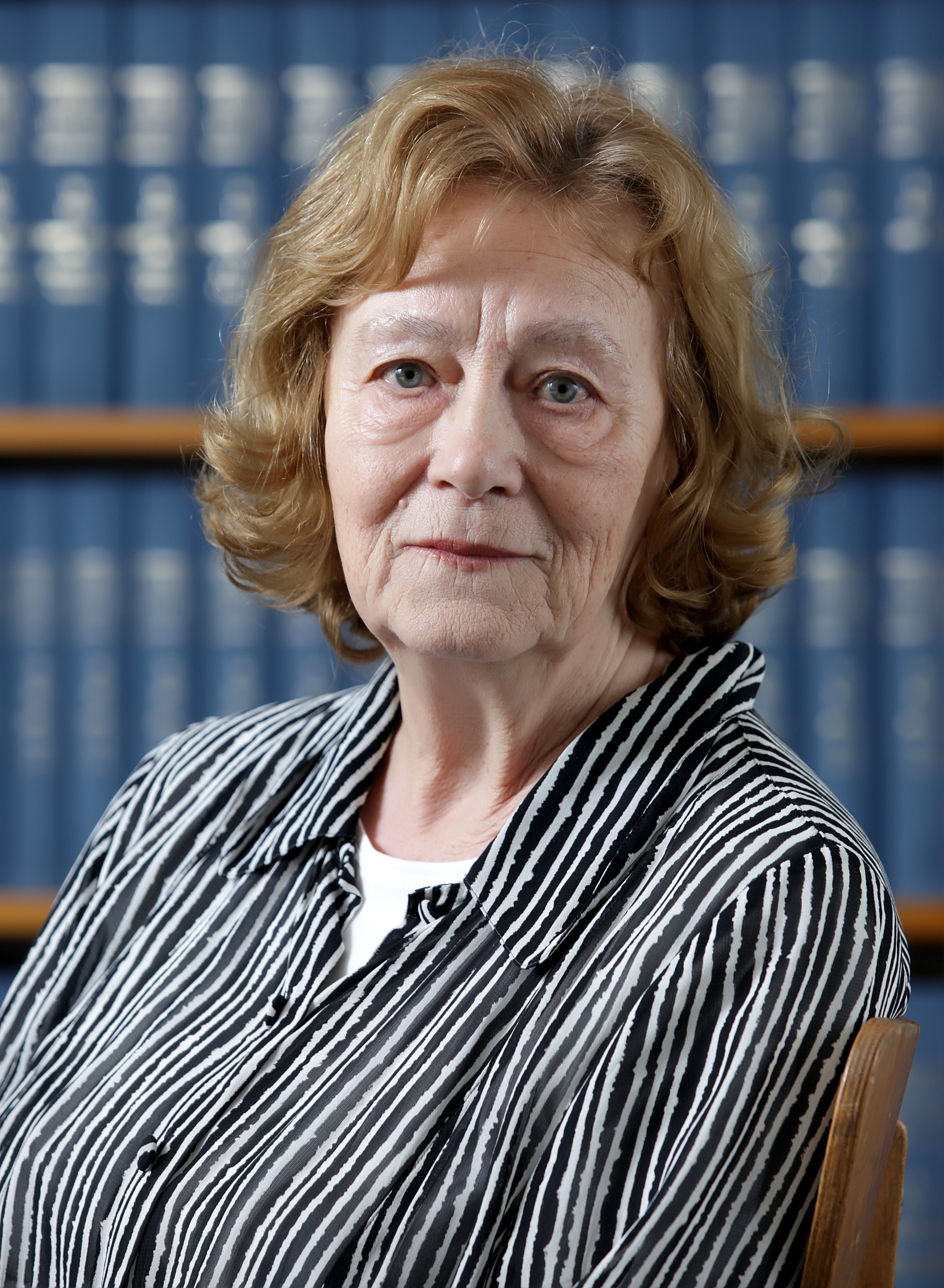She became a Research Associate in 1968, a Senior Research Associate in 1976, and a Research Advisor in 1981. In 1998, she was re-elected to the permanent title of Research Advisor, which she held until her retirement in 2004. In 2005, she was awarded the honorary title of Distinguished Scientist.
She received the State Prize “Ruđer Bošković” in 1971, the HAZU Award in 1997, the Republic Lifetime Achievement Award in 2010, and the Ruđer Bošković Institute Award in 2011. She was also the recipient of the DAAD Visiting Science Award in 2000 and 2005, and she became a member of the European Academy of Sciences in Brussels in 2003.
She undertook several research stays abroad: in 1972 at Uppsala University in the group of Prof. Ivar Olafsson, studying the nature of hydrogen bonds; in 1976/77 at the Medical Foundation of Buffalo in the group of Nobel Laureate Herbert Hauptman, where she learned about the application of direct methods for determining structural factors in solving crystal structures of biological molecules. During her stay in Prof. Jan Kroon’s group at the Bijvoet Center for Biomolecular Research, University of Utrecht, in 1983/84, she became acquainted with molecular modeling methods.
In 1988, she worked at the DESY synchrotron in Hamburg in the group of Nobel Laureate Ada Yonath, where she learned biological macromolecular crystallography methods, cryo techniques, and the use of synchrotrons. By introducing direct methods in crystallography and using more powerful computers, she initiated the study of crystal and molecular structures of natural compounds, organic and biologically active substances (particularly the plant growth hormone auxin), and pharmaceuticals. The study of the conformational stability of organic and biological molecules using computational (molecular dynamics) and experimental methods (X-ray analysis and spectroscopic methods) laid the foundation for establishing structure–property relationships of molecules and studies of mechanisms of chemical and biological reactions, significantly advancing chemical crystallography in Croatia.
The knowledge and experience gained laid the groundwork for a 29-year-long project with the pharmaceutical company Pliva. A strong impetus for this research came from numerous international projects, including a significant European Community project (1991–1994), coordinated and led by Dr. Kojić-Prodić.
She also studied the relationship between the structure and physico-chemical and biological properties of auxins in collaboration with Dr. Volker Magnus. Recognition of this work came in the form of an invitation to write a review article on auxins in the Encyclopedia of Agrochemicals (Wiley, 2002). For her interdisciplinary approach to auxin studies, she received an award from the U.S. Department of Agriculture (USDA) in 1993. Progress in this field was further stimulated by a four-year project with the National Science Foundation.
Her orientation toward interdisciplinary research also provided the foundation for the start of protein crystallography, which began with studies of enzymes and biocatalysis supported by the Volkswagen Foundation (1997–2000). Regarding enzyme catalysis and other essential biological processes, in more recent years, Dr. Kojić-Prodić’s scientific interest was directed toward the study of proton and electron transfer and lesser-known interactions characteristic of quinonoid systems, which also form the basis for the design of new functional materials.
In 1997, she founded the Laboratory for Chemical and Biological Crystallography at the Ruđer Bošković Institute, bringing together experts from various fields, a necessary condition for conducting interdisciplinary research. During her career, she led thirteen international and four national projects.
Her teaching activities included postgraduate studies at the Faculty of Science in Zagreb, the Faculty of Pharmacy and Biochemistry, and undergraduate studies at the Academy of Fine Arts, Department of Restoration and Conservation of Artworks. She supervised 12 doctoral, 8 master’s, and 9 diploma theses.
For medical diagnostics, she established standards for the analysis of kidney and gallstones using X-ray diffraction. She applied X-ray diffraction, optical microscopy, IR spectroscopy, and chemical tests for the characterization of biominerals and archaeological samples.
Among her major professional and institutional roles, she served as Deputy Rector for Science at the University of Zagreb (1986–1988), Chair (1985–1987) and Vice-Chair (1981–1983) of the Scientific Council of the Ruđer Bošković Institute. Between 1981 and 1983, she was also Vice-Chair of the IRB Chemistry Board. In the early 1990s, through collaboration with the Research Center in Jülich and its library, she initiated, together with the IRB Library Head, the computerization of the IRB Library.
She was Head of the National Centre affiliated with the Cambridge Crystallographic Data Centre, within which the Cambridge Structural Database was implemented and disseminated (1985–2007). She was a member of the Commission for Chemical Crystallography within the International Union of Crystallography (1989–1998). She served as co-editor of the international journal Acta Crystallographica and as a reviewer for numerous international journals. She delivered many invited lectures at international and domestic scientific conferences.
The bibliography of Biserka Kojić-Prodić includes more than 280 scientific publications and is archived in the CROSBI database.


